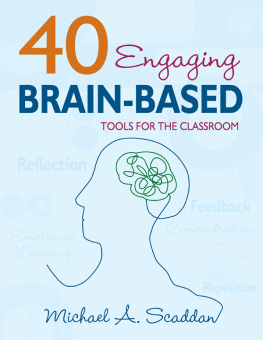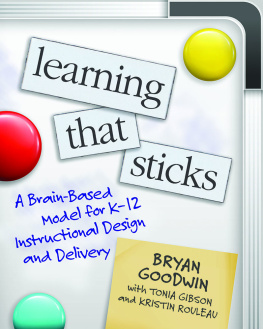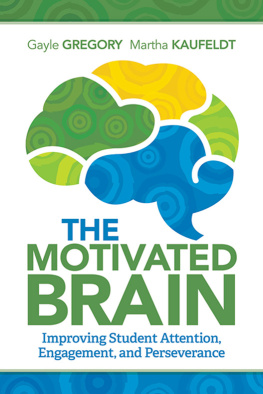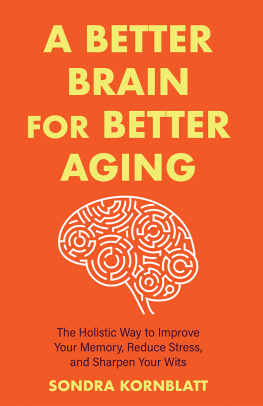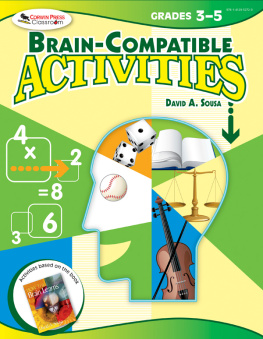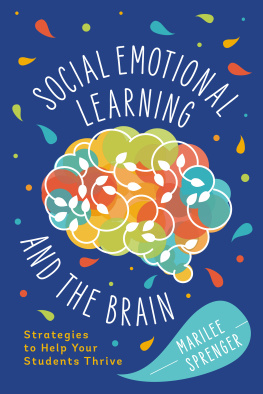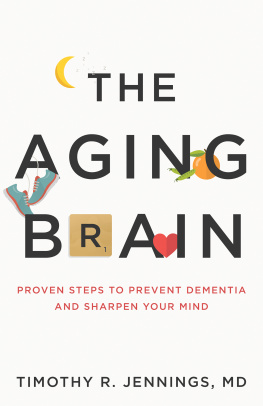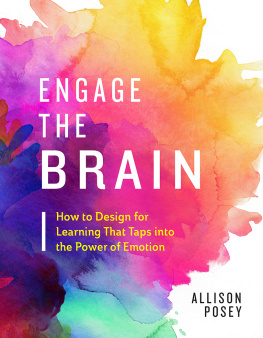Copyright 2009 by Corwin Press.
First Skyhorse Publishing edition 2016.
All rights reserved. No part of this book may be reproduced in any manner without the express written consent of the publisher, except in the case of brief excerpts in critical reviews or articles. All inquiries should be addressed to Skyhorse Publishing, 307 West 36th Street, 11th Floor, New York, NY 10018.
Skyhorse Publishing books may be purchased in bulk at special discounts for sales promotion, corporate gifts, fund-raising, or educational purposes. Special editions can also be created to specifications. For details, contact the Special Sales Department, Skyhorse Publishing, 307 West 36th Street, 11th Floor, New York, NY 10018 or .
Skyhorse and Skyhorse Publishing are registered trademarks of Skyhorse Publishing, Inc., a Delaware corporation.
Visit our website at www.skyhorsepublishing.com.
10 9 8 7 6 5 4 3 2 1
Library of Congress Cataloging-in-Publication Data is available on file.
Cover design by Lisa Riley
Print ISBN: 978-1-63450-772-1
Ebook ISBN: 978-1-63450-783-7
Printed in the United States of America
Contents
Acknowledgments
T hanks to all the staff and students at Te Puna School who have helped to make this journey of brain-compatible learning so meaningful.
The publisher thanks the following reviewers for their contributions to this work:
Dr. Barrie Bennett
Professor of Professional Learning & Development:
Roles of Knowledge Creation
The University of Toronto
Ontario, Canada
Joan Cundiff
Gifted Education Coordinator
Intermediate School District, #287
Plymouth, MN
Sheryl Feinstein, EdD
Professor of Secondary Education
Augustana College
Sioux Falls, SD
Tara McGuigan
Science Teacher and GATE Resource Teacher
Madison High School
San Diego, CA
Bob Nelson, EdD
Instructor of Advanced Teacher Education
University of Texas at Dallas
Dallas, TX
About the Author

Michael A. Scaddan is not only a successful and innovative professional trainer, he has also led a highly successful school down the path of brain-compatible learning. As a principal, he continues to be a practical, hands-on educator, teaching all grade levels of students on a regular basis. This enables him to acquire and develop hundreds of useful and practical classroom tips as well as fine tune the successful schoolwide techniques that he passes on to fellow educators.
Always looking for a better way, he has extensive training in brain-compatible learning. He completed a Masters of Education in accelerated learning and gained certification as a trainer with the Jensen Corporation.
Currently Michael offers more than 20 one- to three-day workshops on a wide range of learning topics.
He now works as a fulltime learning consultant in the USA, Sweden, Hungary, Singapore, Australia, and New Zealand, and has been an educational consultant to the government of Thailand.
The author can be reached at .
Introduction
S o much of what we do as teachers is intuitive, based on our own unique communication style and a lifetime of experiences. Although our teaching may be successful, sharing and explaining why it works is often difficult. This is especially so with the subtle techniques that we use nonconsciously. I found this out early in my careerI knew what succeeded but didnt really understand why.
In 1995, I became principal of Te Puna School in New Zealand, and as a staff, we began the journey that I had personally committed to a few years before: a journey of brain-compatible learning. Put simply, this meant investigating the best learning research from behaviorists, neuroscientists, and cognitive (learning/thinking) researchers and then putting what worked best into a holistic school program. It not only provided a why for much of our current practice, it also extended our teaching, often in subtle yet powerful ways.
Through this understanding, the staff was able to discuss what they did and why it worked with other educationalists, parents, and most important, with students. The approach saw substantial gains in achievement and a radical improvement in behavior.
I believe that a brain-compatible approach is needed in our schools. We are all faced with continual rapid change. For a variety of reasons, the learners with whom we work today are different. They are encountering and working through many issues, including changes in the family and the influence of technology through all facets of life. The expectations for teachers and how they are viewed by society has also changed, whether we like them or not.
In many cases, traditional methodsreferred to by some educators as the factory modelare no longer working as effectively as they used to. If we want success for learners, we need to understand people rather than content, emotions rather than test results, learning rather than teaching. In short, we need a broader range of skills and an understanding of how our brain, mind, and body function in the learning situation.
Thats why I wrote this book. It is a compilation of many of the brain-compatible techniques that we read about at our school and found so successful. Whether you are new to this style of learning or an old hand, Im sure that you will find these tools useful. Remember to modify them as necessary for your own unique environment.
SUGGESTIONS FOR USING THIS BOOK
The ideas in this book are based upon practical classroom ideas. Although I have included research or theoretical references for most ideas, space dictated that elaboration of this research was not possible. There are many other books that are excellent sources in this regard. I have included an extensive bibliography for those who wish to read further.
The book is designed so that the classroom teacher can practice a series of practical tips every week of the year. The book is set out in four parts, each divided into ten chapters presenting ten tools. They are all practical tips and have been tried and tested in classrooms spanning a variety of ages and cultural groups.
I have begun with an emphasis on that all-important issue: relationships. These are followed by issues of memory and concentration, because these are so important to help us achieve understanding. The third part helps students find out how they learn so that they can begin to take ownership of their own life and learning. I have left it until this time so that the teacher will feel more confident in their ability to let go and also because by this stage of the year, the students should feel more secure in their ability to take learning risks. The final part deals with specific teaching techniques. More experienced teachers may want to read Part IV earlier.
Once introduced, the tools are designed to be used continually and in a variety of ways according to your needs and experience. For the beginner, I recommend that you introduce them sequentially, one tool per week; with experience, they may be selected as needed. As you progress, you may want to introduce more than one tool at a time in a parallel process.
The overview on the following pages shows how the brain-compatible philosophy developed at Te Puna School. The I care philosophy is the umbrella under which we operate. The factors included under the I care umbrella make up our own unique model. For your school community to succeed, you will need to develop your own philosophy that is unique to your own needs. If you have not already done this, it is an important place to begin. It may develop as you read this book, but it must work for you.

